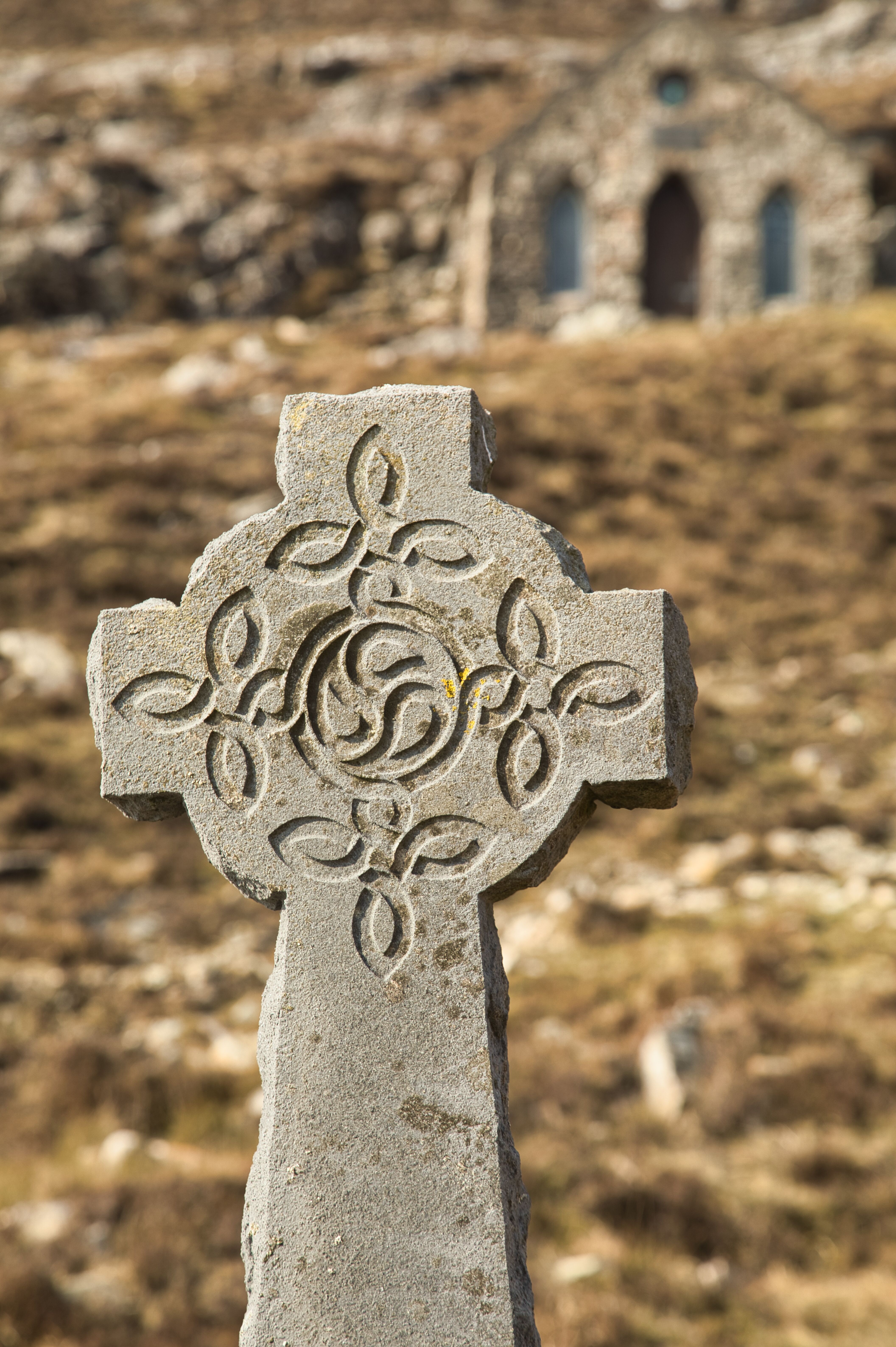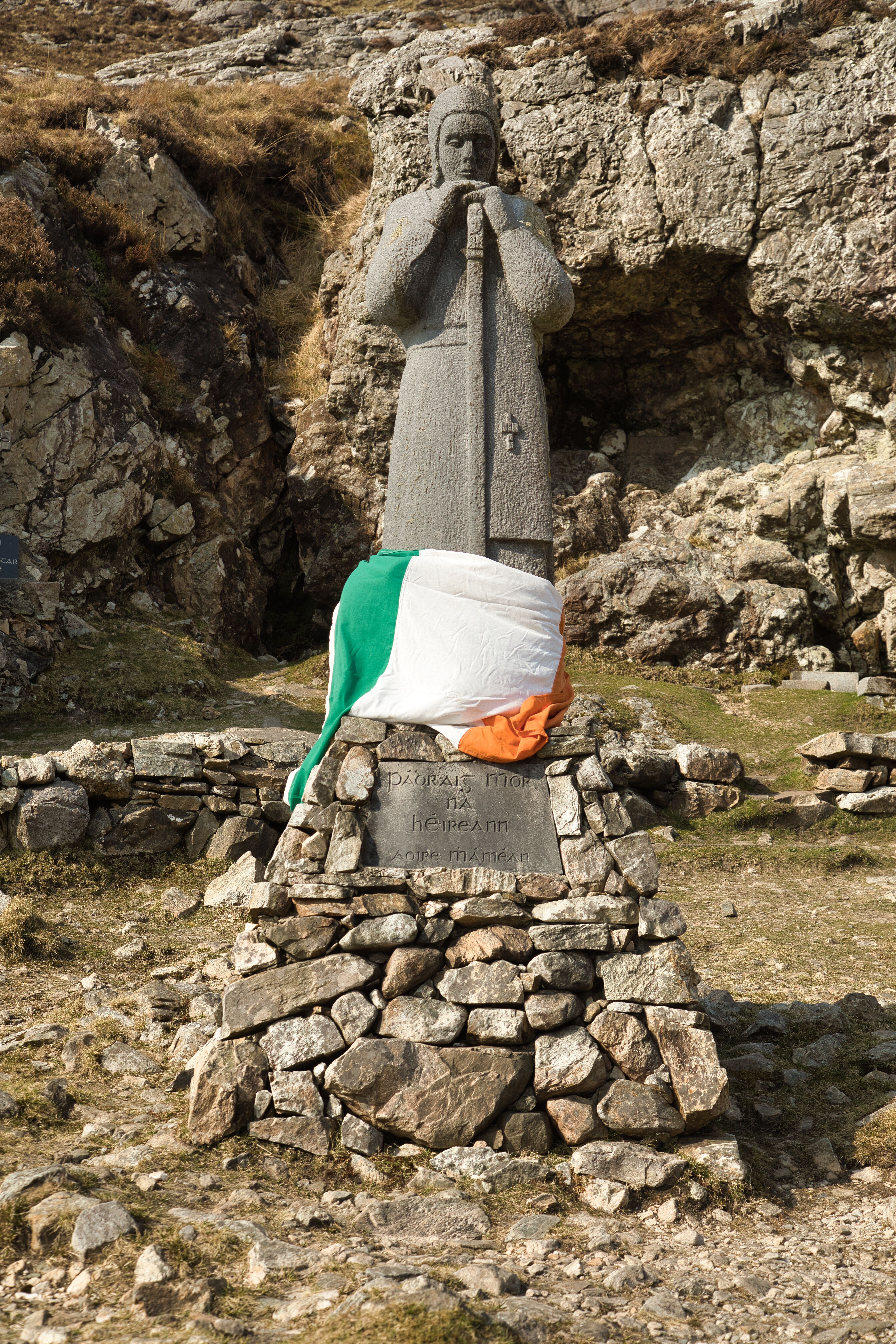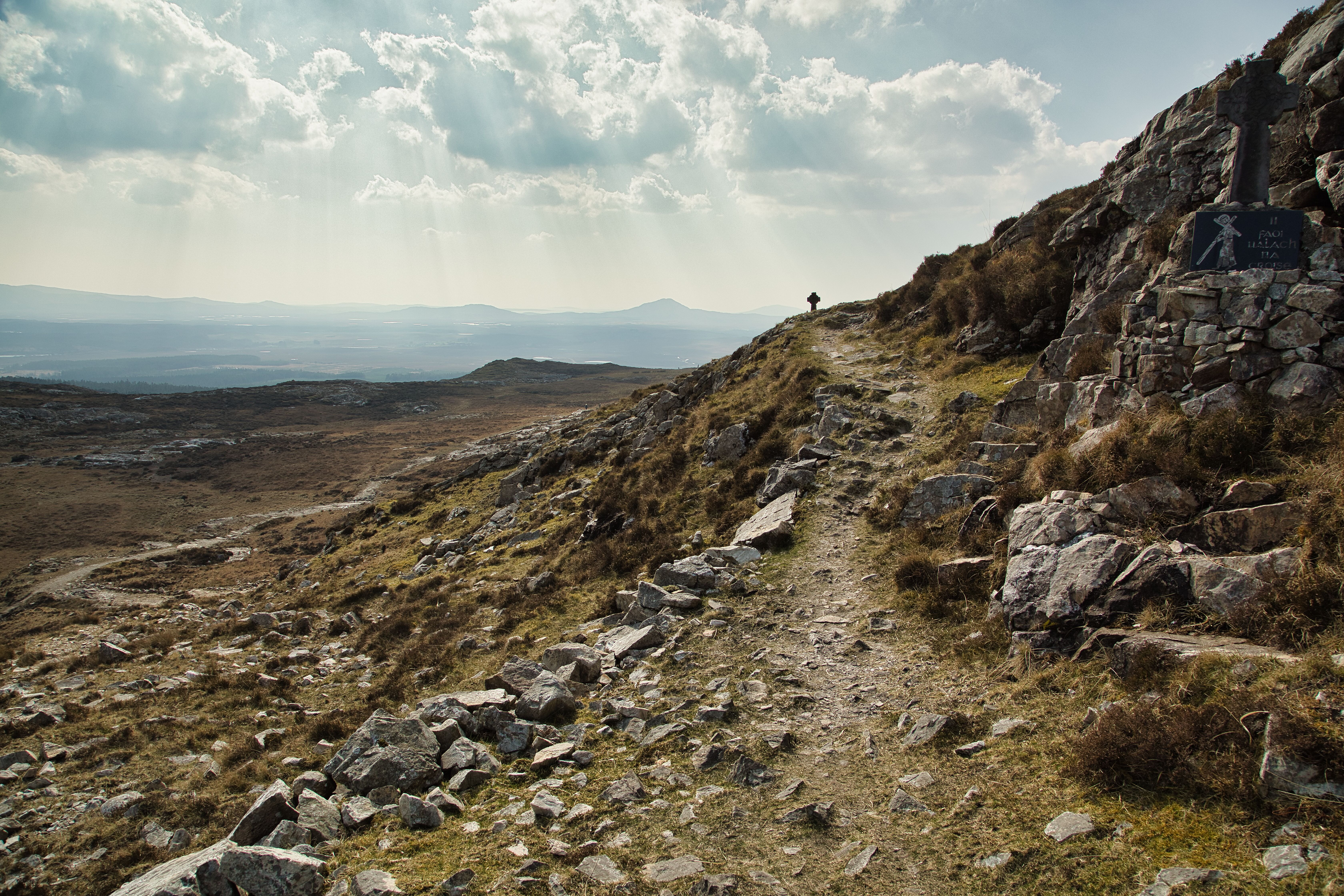A Secluded Pilgrims Chapel in Connemara. ⛪️

OSI Sheet 37.
“An early-morning walk is a blessing for the whole day.”
Henry David Thoreau
Historical context

The Chapel and a statue of St Patrick.
Like many pagan sites it was Christianised
Thirty miles away from Croagh Patrick the lesser known Mámean pilgrim site dates back to the 5th century. Pre-dating this time it is also associated with the Lughnasa festivals. Like many pagan sites it was Christianised and a great pattern day took place on the last Sunday in July or the first Sunday in August. The site is marked by a holy well, St. Patrick’s Bed; a cleft in the rock and a circles of stones representing the Stations of the Cross. Completing the shrine is a Mass Rock – used during the eighteenth century penal times when Roman Catholicism was outlawed.

One of the stations of the cross
Older people gathered by the well
People gathered from both sides of the mountain to celebrate this day. The people of Connemara would ascend from Recess and the people of Joyce Country from Maam. Travel writers in the 19th century give us an insight into the event. Henry Inglis left us his account in 1834. He describes the groups of people moving up the mountain side. Older people gathered by the well and others around tents from which poiteen was served. There were a score of tents or more – some open at the sides, and more closed; hundreds in groups were seated on the grass, or on the stones which lie abundantly there. Some old persons were on their knees, beside the holy well; performing their devotions….I was warmly welcomed as a stranger by many who invited me into their tents. Of course I accepted the invitation; and the pure potheen circulated freely’.
 Vista looking towards Connemara
Vista looking towards ConnemaraThe pilgrimage fell into disrepute
People from Joyce Country and Connemara stayed in two separate groups at the site and the day often ended in a fight; the Joyces and their opponents, usually hold patterns near the same ground, though not close together, but yet so near as to make it impossible that the meeting should break without a scrimmage. The pilgrimage fell into disrepute in the 19th century due to faction fighting and poiteen drinking. By the mid 1900’s it had almost died out. Fr. Micheál Mc Gréil with great local support was responsible for reviving the pilgrimage in the 1980’s. A small chapel was built beside St. Patrick’s bed and stone crosses were added to mark each station of the cross. A statue of St. Patrick depicted as a shepherd with a sheep at his feet was created by Cliodna Cussen in 1986.

Saint Patrick
A variety of objects are left behind as offerings
Today the Máméan pilgrimage is a more peaceful event compared to the 19th century. Fr. Mc Gréil and Fr. Fintan Monaghan organise the pilgrimages and events at Máméan. The pilgrimage takes place three times a year on St. Patrick’s Day, Good Friday and the first Sunday in August. People from both sides of the mountain greet friends and acquaintances at the site. One might plan to arrive early to take a rest, enjoy the scenery and have a chat. Some visit the well where a variety of objects are left behind as offerings including hair pins, lighters, keys and coins. Hill walkers pass through taking the Western Way track and the local Red Cross standby. Once the Stations of the Cross begin the crowd descends to total silence. A volunteer leads the stations carrying a white cross from one stone marker to the next. The mass takes place by the mass rock and the chapel. A local Seanachaí and couple of young musicians provide music and some sean nós dancing. Despite the often less favourable weather conditions, the crowds of young and old return to this high place every year.*

The Chapel built into the side of the mountain
*(narrative from National Museum of Ireland - Our Irish Heritage)
The Trek
The shrine lies about three kilometers into the Maum Turk mountain range, and it's a wonderful short hike to get there. If you travel from the Connemara side, there is a shorter path in, but we chose to approach from the track via the Maum area. The trail is well-maintained and gently ascends for about 300 meters.

Looking towards Maum
After approaching the ridge line, the small church carved into the rock to the right is visible and is only a short climb away. Especially when looking out over the wide Connemara region, which is dotted with several small lakes and lochs, the view from here is breathtaking. Through the haze, one can make out the Atlantic Ocean in the distance.

Window on the side of the Chapel
The topography on the slopes of Maum Turk offers the discerning hiker the opportunity to ascend higher for even spectacular vistas. You won't be let down by this undiscovered treasure buried away in a stunning area of Galway and a part of the Western Way route.

A station in the distance